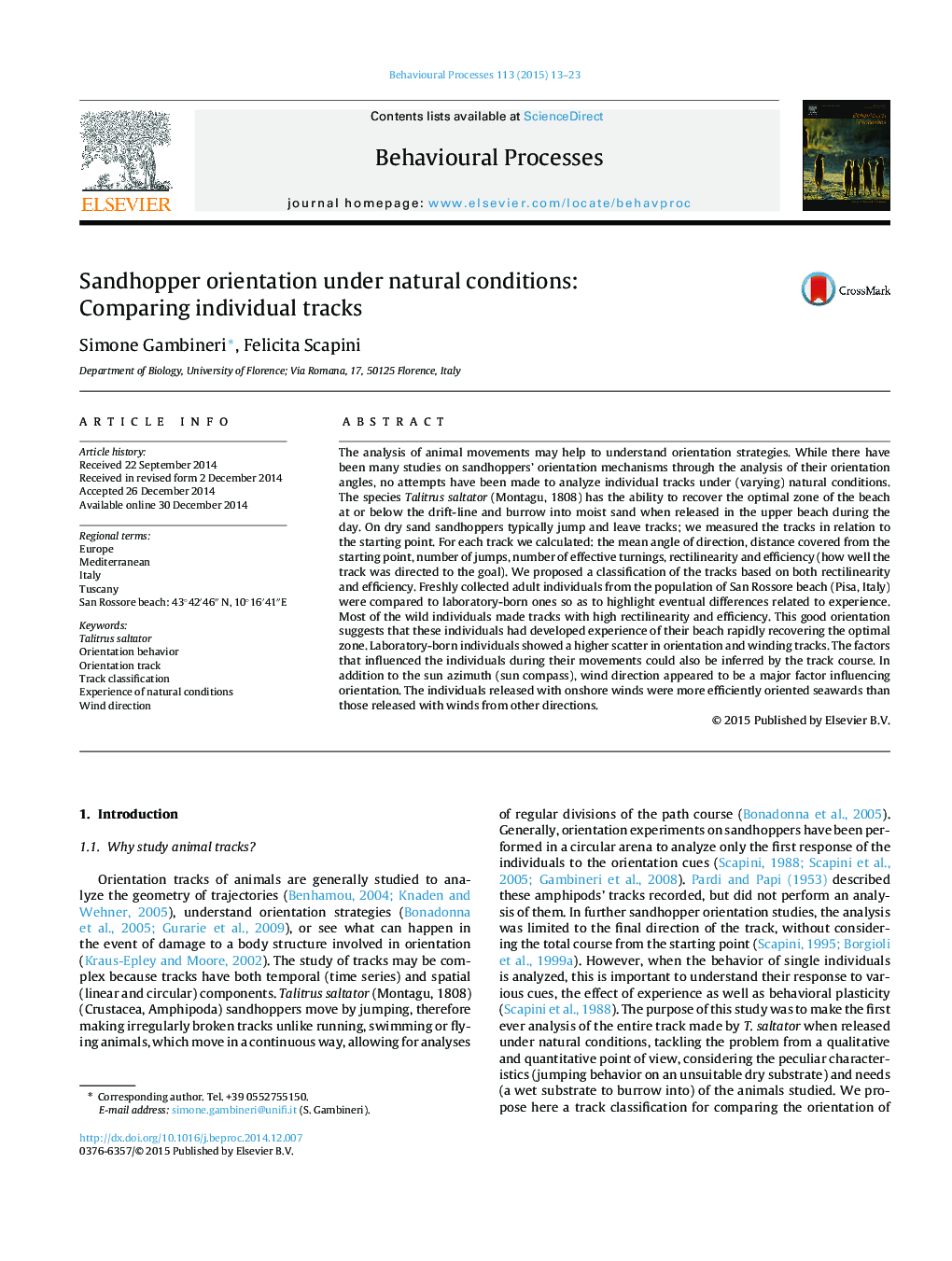| کد مقاله | کد نشریه | سال انتشار | مقاله انگلیسی | نسخه تمام متن |
|---|---|---|---|---|
| 8497132 | 1553167 | 2015 | 11 صفحه PDF | دانلود رایگان |
عنوان انگلیسی مقاله ISI
Sandhopper orientation under natural conditions: Comparing individual tracks
ترجمه فارسی عنوان
جهت گیری شن و ماسه در شرایط طبیعی: مقایسه آهنگ های فردی
دانلود مقاله + سفارش ترجمه
دانلود مقاله ISI انگلیسی
رایگان برای ایرانیان
کلمات کلیدی
موضوعات مرتبط
علوم زیستی و بیوفناوری
علوم کشاورزی و بیولوژیک
علوم دامی و جانورشناسی
چکیده انگلیسی
The analysis of animal movements may help to understand orientation strategies. While there have been many studies on sandhoppers' orientation mechanisms through the analysis of their orientation angles, no attempts have been made to analyze individual tracks under (varying) natural conditions. The species Talitrus saltator (Montagu, 1808) has the ability to recover the optimal zone of the beach at or below the drift-line and burrow into moist sand when released in the upper beach during the day. On dry sand sandhoppers typically jump and leave tracks; we measured the tracks in relation to the starting point. For each track we calculated: the mean angle of direction, distance covered from the starting point, number of jumps, number of effective turnings, rectilinearity and efficiency (how well the track was directed to the goal). We proposed a classification of the tracks based on both rectilinearity and efficiency. Freshly collected adult individuals from the population of San Rossore beach (Pisa, Italy) were compared to laboratory-born ones so as to highlight eventual differences related to experience. Most of the wild individuals made tracks with high rectilinearity and efficiency. This good orientation suggests that these individuals had developed experience of their beach rapidly recovering the optimal zone. Laboratory-born individuals showed a higher scatter in orientation and winding tracks. The factors that influenced the individuals during their movements could also be inferred by the track course. In addition to the sun azimuth (sun compass), wind direction appeared to be a major factor influencing orientation. The individuals released with onshore winds were more efficiently oriented seawards than those released with winds from other directions.
ناشر
Database: Elsevier - ScienceDirect (ساینس دایرکت)
Journal: Behavioural Processes - Volume 113, April 2015, Pages 13-23
Journal: Behavioural Processes - Volume 113, April 2015, Pages 13-23
نویسندگان
Simone Gambineri, Felicita Scapini,
